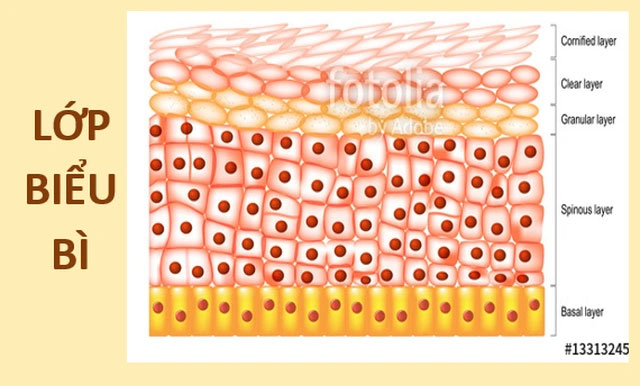As the largest organ and the one that helps us survive, how is the skin made up?
Weighing about 4kg and covering an area of up to 2 square meters, the skin is the largest organ on the human body. It can be affirmed that without this organ, you cannot exist, because the liquid in the body will evaporate, and that is not to mention a series of other causes when people are no longer protected. protected by leather.
Function of the skin
Most noticeable is that the skin helps to protect the parts immediately below them from external influences: From impact force, environmental factors to UV rays. 24 hours a day and 7 days a week, our skin acts like a 'diligent worker', constantly fighting infectious bacteria, constantly regenerating new skin cells, at the same time nor do we forget the task of producing vitamin D to supply the skeletal system.

How is the skin made up for all these 'difficult:' tasks mentioned above?
In fact, up to 3 skin layers work together to help humans survive.

The outermost layer of skin - something we can see with our eyes - is called the epidermis. The main constituent of the epidermis is keratinocytes, a type of cell derived from keratin, the type of protein that acts as the basic structural material of skin, nails and hair. Keratin is also the strongest protein that should be trusted to protect other skin cells from damage.
Despite being likened to a solid wall, keratin cannot protect the body from any harmful agents. Therefore, the epidermis also possesses other defense mechanisms.
Langerhan cells located on the epidermis are responsible for sending warning information to the immune system if any harmful bacteria or viruses find their way into the body. There is also Melanin, which is the dark pigment that determines the color of human skin, helping to block UV rays from sunlight.

Just below the epidermis is the second layer of skin called the dermis . The dermis is even thicker than the epidermis and this is also a factor that helps create the strength and elasticity of the human skin, thanks to the presence of collagen and elastin fiber system. Nervous system, hair follicles, glands are also located in the dermis. Therefore, touch and body temperature control system is determined by this skin.
The slime glands in the dermis produce sebum, an oily substance that covers the outer skin, thereby preventing the growth of bacteria on the skin.

The final, deepest layer of skin is called the subcutaneous layer . The subcutaneous tissue acts as a bridge to help connect the epidermis, dermis to bones and other organs. Although still considered to be a component of the skin, the subcutaneous layer is composed primarily of fat, acting as an insulating layer to help keep the body warm as well as create a cushion when impacted. The subcutaneous fat also acts as a storehouse, which can be converted into energy to provide for body activities in case of need.
Thus, we know the three main components of the skin: the epidermis, dermis and subcutaneous layer . Your skin is made up of about 1.5 trillion cells, which varies according to each person's physical characteristics. On average, the body produces about 40,000 new skin cells every hour to replace the dead skin cells that fall out of us.

Diverse "living world" right on human skin
Right on the surface of the skin is a very diverse 'living world', with about 1,000 species of microorganisms coexisting and developing. It is estimated that there are 50 million bacteria on every 6.5 square centimeters of body surface. This may sound like a lot, but if we put all the microorganisms residing on the surface of the body in one place, it is only as big as a pea.

Just like the intestinal tract, there are both bad bacteria and good bacteria on our skin. It is important that this microflora is maintained in a balanced state, so that we will have a healthy skin.
- Organ sea - Great instrument operated by waves and wind
- Why is the skin of the lips not the same as other skin areas?
- Cream made from coffee beans helps fight skin cancer
- What is organ transplantation?
- How to register organ donors when they die?
- Drink smoothes skin
- Transplants should be made between people of the same sex
- Detecting dead skin helps to heal wounds faster
- Why is it so easy to scratch itch?
- The culprit causes the skin to become discolored when exposed to sunlight
- What should be noted when you want to donate organs?
- Why striped tiger skin?
 'Fine laughs' - Scary and painful torture in ancient times
'Fine laughs' - Scary and painful torture in ancient times The sequence of numbers 142857 of the Egyptian pyramids is known as the strangest number in the world - Why?
The sequence of numbers 142857 of the Egyptian pyramids is known as the strangest number in the world - Why? Miracle behind the world's largest stone Buddha statue
Miracle behind the world's largest stone Buddha statue What is alum?
What is alum?